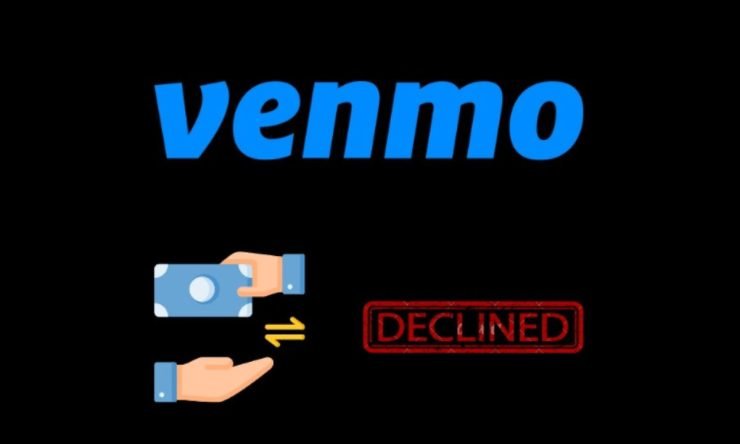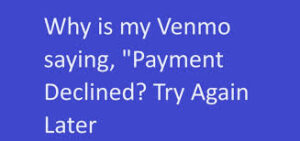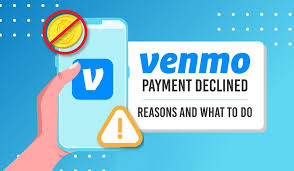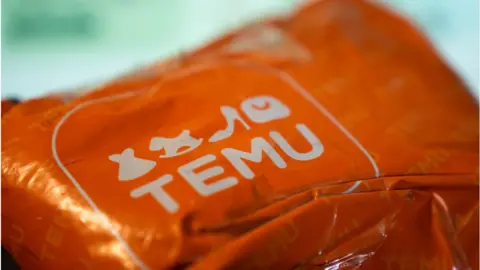
In the event of a Venmo payment decline, identifying the specific reason can be challenging. Venmo’s algorithm determines whether to approve or reject a transaction based on various factors, including the transfer amount, sender-recipient relationship, and internal fraud detection system. To help you in resolving and preventing payment declines, this comprehensive guide provides insights into understanding and addressing the issue.
7 Reasons for Venmo Transaction Declined
Experiencing a Venmo payment decline can indeed be frustrating, but as mentioned earlier, various troubleshooting steps can often resolve the issue. However, if you find declined payments to be a frequent occurrence and want to avoid the hassle, an alternative option to consider is using a credit card processor. Unlike Venmo, credit card processors offer customization options that can help reduce the likelihood of payment declines. Additionally, having an account manager available can provide personalized support for any payment-related challenges that may arise. This approach offers a more reliable payment processing solution.

Venmo Transaction Declined
If your Venmo transaction was declined, there could be several reasons behind it. Here are a few common causes and steps you can take to address the issue:
1. Insufficient Funds: Ensure that you have sufficient funds in your Venmo account or linked bank account to cover the transaction amount. If your balance is too low, you may need to add funds or transfer money from your bank account into Venmo.
2. Payment Limitations: Check if you have reached any transaction limits imposed by Venmo. Venmo has certain limits on transaction amounts, both for sending and receiving money. If you have exceeded these limits, you may need to wait until the limits reset or contact Venmo support for assistance.
3. Card Verification Issues: If you linked a debit or credit card to your Venmo account and the transaction was declined, verify that the card information is accurate, including the card number, expiration date, and CVV code. Make sure the card has not expired or been canceled. You can try removing and re-adding the card or using a different payment method.
4. Security Concerns: Sometimes, Venmo may decline transactions due to security reasons. This could be triggered by suspicious activity or if Venmo detects a potential risk associated with the transaction. In such cases, it is advisable to reach out to Venmo support for further assistance and clarification.
5. Account Verification: If you recently created a new Venmo account or made changes to your account information, Venmo may require additional verification steps. Check your account for any pending verification requests and follow the instructions provided by Venmo to complete the verification process.
6. Network or Technical Issues: Occasionally, Venmo may experience technical difficulties or network interruptions that can result in transaction failures. If you suspect this to be the case, you can try again later or contact Venmo support for information on any known outages or issues.
7. Products or services are considered high-risk: Another common reason Venmo transaction declined is if they involve a high-risk business. Factors that can classify a business as high-risk include a high chargeback ratio, significant transaction volume, or a large number of card-not-present transactions.
In the Case of Venmo Payment Declined Can I get a Refund?

Venmo Transaction Declined
If a Venmo payment is declined, a refund is not necessary because the transaction does not take place. No funds are charged to your account or the linked payment card since the payment is not processed. Venmo can be contacted for assistance in cases where payment does not go through, but it’s important to note that Venmo does not guarantee refunds in any situation.
What should I do if the Venmo transaction declined issue persists?
If the issue persists, consider the following steps to troubleshoot your Venmo transaction:
- Check Your Balance: Verify that your Venmo account has sufficient funds or that your linked payment methods (such as bank accounts or cards) have an available balance. If needed, add funds to your Venmo account or use an alternative payment source.
- Retry the Transaction: Sometimes, transactions fail due to temporary glitches. Retry the payment after a few minutes. Ensure you have a stable internet connection.
- Contact Customer Support: If the problem persists, reach out to Venmo’s customer support. They can provide specific guidance based on your account and transaction details.
- Try a Different Payment Method: Consider using an alternative payment method. If you’re using a card, try a different card. Alternatively, use another payment app or service.
- Review Security Settings: Check if any security settings or restrictions are affecting your transaction. For example, some banks may block certain types of online payments. Adjust your settings if necessary.
- Clear Cache and Cookies: If you’re using Venmo through a web browser, clear your cache and cookies. Sometimes, outdated data can cause issues.
Merchant accounts are an alternative to payment service providers that can help mitigate issues like Venmo transaction declined, held funds, and frozen accounts. You can explore other payment service providers like Stripe, Square, or PayPal as potential options
FAQs: Venmo transaction declined

Venmo Transaction Declined
Why was I charged a seller transaction fee on Venmo?
When a business profile or a personal profile selling something receives a payment on Venmo, a seller transaction fee is applied. This fee enables Venmo to provide business-related functionalities like purchase protection and tax reporting. The fee is deducted automatically from the total amount sent by the buyer, and the seller receives the original price minus the fee. The specific details and amount of the fee can be found in Venmo’s fee structure and terms of service.
How to delete Venmo transactions
While it is not possible to delete your Venmo transaction history, you can adjust the privacy settings to make the transactions private. By doing so, only you and the person with whom you exchanged money will be able to view the transaction. Additionally, you can update your privacy settings to adhere to the more restrictive settings between you and the other person involved in the transaction.
How to hide Venmo transactions?
- Open the Venmo app on your mobile device and log in to your account.
- Locate the specific transaction you want to make private in your transaction history.
- Tap on the transaction to open the transaction details.
- Within the transaction details, you will find a privacy setting option. It is usually represented by an icon resembling two people or a globe.
- Tap on the privacy setting icon to access the privacy options for the transaction.
- From the available options, select the setting that makes the transaction private. This option is typically labeled as “Private” or “Only Me.”
- After selecting the desired privacy setting, save or apply the changes.
What is the Venmo transaction limit?
For verified customers on Venmo, there are limits in place to regulate spending and peer-to-peer (P2P) transactions. The weekly spending limit is set at $7,000, while the weekly P2P limit is $60,000. The specific daily transfer limit varies based on factors such as the account verification level and transaction history, typically ranging between $2,999.99 and $6,999.99. These limits are designed to ensure security and manage the flow of funds within the Venmo platform.
Venmo transaction declined | Why It Happens and What to Do




